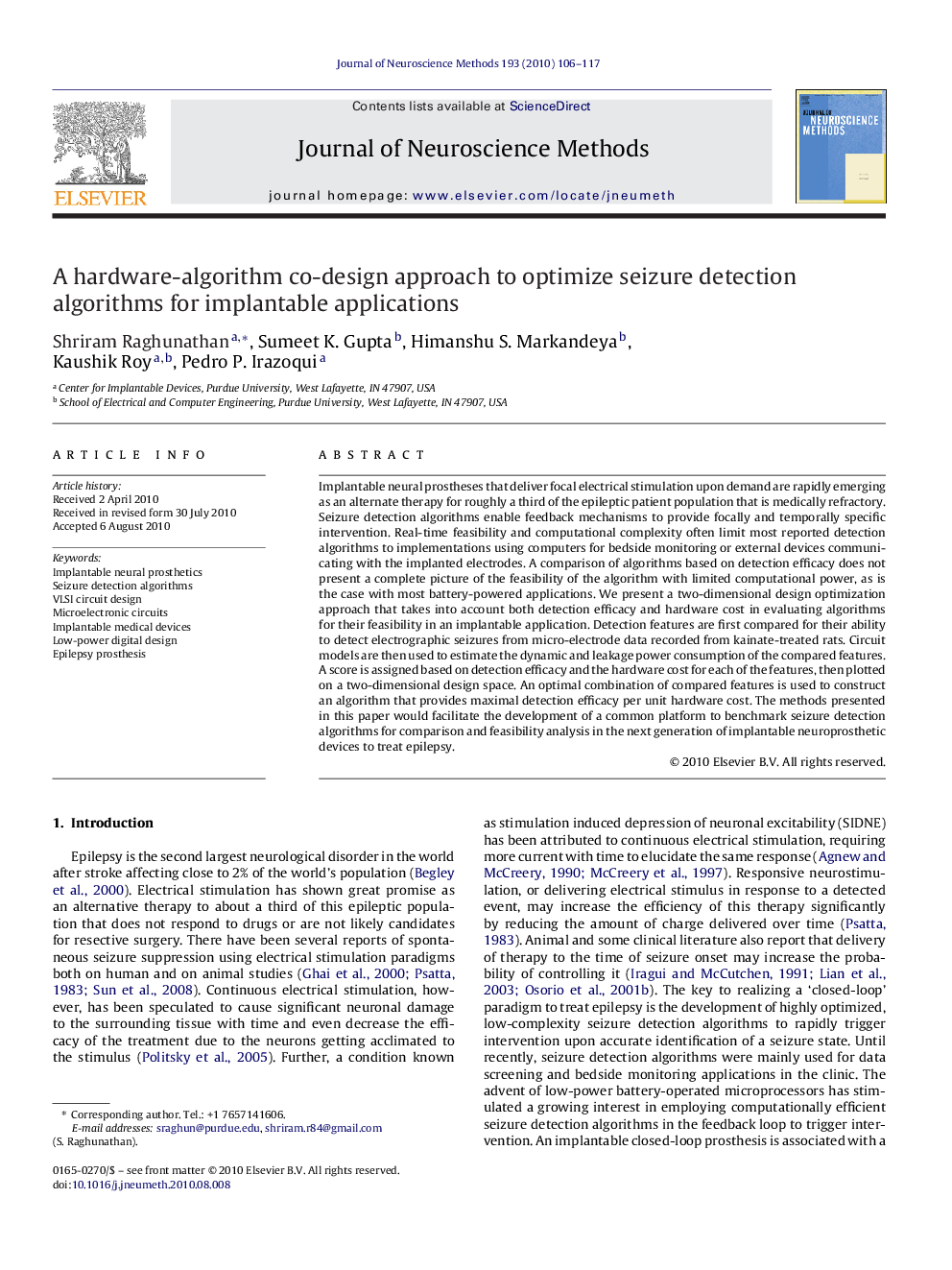| کد مقاله | کد نشریه | سال انتشار | مقاله انگلیسی | نسخه تمام متن |
|---|---|---|---|---|
| 4335506 | 1295157 | 2010 | 12 صفحه PDF | دانلود رایگان |

Implantable neural prostheses that deliver focal electrical stimulation upon demand are rapidly emerging as an alternate therapy for roughly a third of the epileptic patient population that is medically refractory. Seizure detection algorithms enable feedback mechanisms to provide focally and temporally specific intervention. Real-time feasibility and computational complexity often limit most reported detection algorithms to implementations using computers for bedside monitoring or external devices communicating with the implanted electrodes. A comparison of algorithms based on detection efficacy does not present a complete picture of the feasibility of the algorithm with limited computational power, as is the case with most battery-powered applications. We present a two-dimensional design optimization approach that takes into account both detection efficacy and hardware cost in evaluating algorithms for their feasibility in an implantable application. Detection features are first compared for their ability to detect electrographic seizures from micro-electrode data recorded from kainate-treated rats. Circuit models are then used to estimate the dynamic and leakage power consumption of the compared features. A score is assigned based on detection efficacy and the hardware cost for each of the features, then plotted on a two-dimensional design space. An optimal combination of compared features is used to construct an algorithm that provides maximal detection efficacy per unit hardware cost. The methods presented in this paper would facilitate the development of a common platform to benchmark seizure detection algorithms for comparison and feasibility analysis in the next generation of implantable neuroprosthetic devices to treat epilepsy.
Research highlightsThe manuscript presents an optimization methodology for adapting seizure detection algorithms for use in implantable neuroprosthetic devices to treat drug-resistant epilepsy. Neurostimulation based on detection of a seizure event has been showing great promise in treating this large patient population of epileptics that do not respond to conventional therapy. The evaluation of seizure detection features presented in this manuscript take into account the hardware cost associated with the implementation of the seizure detection algorithm while evaluating its efficacy in detection ictal events to form a two-dimensional detection space. A detection efficacy per unit hardware cost feature is incorporated into selection of optimized algorithms for use in battery-powered implants, which normally limit the use of most published seizure detection algorithms. A simple algorithm is constructed based on the hardware-optimized features and the advantage of the optimized combination is quantitatively demonstrated versus a blind combination. Live animal data are used to validate the detection efficacy of each of the compared seizure detection features. The presented techniques would enable benchmarking published and new seizure detection algorithms for feasibility analysis in the next generation of implantable devices to treat epilepsy.
Journal: Journal of Neuroscience Methods - Volume 193, Issue 1, 30 October 2010, Pages 106–117